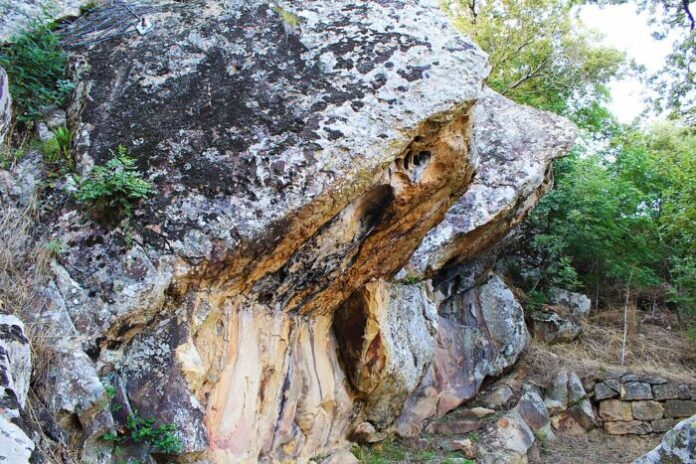
In the town of Filiano, in Basilicata, there are two beautiful anthropological reserves; completely surrounded by greenery, they would be the ideal destination for an ecotourism that brings together love for nature and passion for history and discovery.
The State Anthropological and Natural Reserve “I Pisconi” extends from the confluence of the Bradanello torrent with the Vallone delle Volpi, at 620 meters, up to the 1030 meters of Serra Carriero. It was born to safeguard a truly relevant archaeological site and to preserve the richness of flora and fauna.
The vegetation consists mainly of Turkey oak, but there are also downy oak, ash, field maple and in the undergrowth there are hawthorn, bramble and dogwood. The fauna is characterized by the presence of wolves, wild cats and animals such as weasels, martens, badgers, foxes and wild boars.
The oldest artistic trace of man in Basilicata has been found in this natural paradise. The locals had already mentioned it for some time, when in 1965 the director of the provincial museum of Potenza, Francesco Ranaldi, officially discovered in a wooded area at 879 meters above sea level prehistoric paintings on the part of a large rocky outcrop, known as Tuppo dei Sassi. From the name of the discoverer, the site took the name of “Riparo Ranaldi”, a natural half-arched shelter, 6 meters high and hollowed in the sandstone, partially collapsed on the sides, as demonstrated by the boulders rolled under the edge of the short plateau.
On a portion of the surface of the internal wall lie cave paintings, traced with the fingers using red ocher. The color has certainly lost its original liveliness, but it is still possible to appreciate the images traced, even if they have been variously interpreted. Ranaldi had interpreted the painting as a hunting scene with men and animals (deer and goat) as protagonists captured and held in a snare or hit with a weapon. The most interesting figure is a man made up of three oval bodies, to be interpreted as a sorcerer or divinity.
A stratigraphic excavation and further studies have documented the prolonged frequentation of the place by different human groups of passage, as demonstrated by the remains of the lithic industry, fragments of tools, other engravings discovered above the shelter spur and the paintings, which date back to different moments. The pictorial complex would therefore consist of deer and fallow deer and men in the act of hunting and some of the drawings have been interpreted as trees; the large figure with three ovals at the top would instead be the symbolic representation of an oak leaf. The paintings, in this way, were used to signal the passing hunter the presence of deer and other game in an oak forest. The paintings date back to a period between the final phase of the Paleolithic and the Mesolithic, approximately 12,000 years ago.

The second pearl is the Agromonte Spacciaboschi anthropological nature reserve, established in 1972 to safeguard a site of considerable historical interest; it is located on one of the terraces overlooking the Vitalba Valley.
The site is accessed from the fountain known as the Sparciavosc dialect term, located on the Iscalunga-Dragonetti provincial road, just before reaching the town of Scalera. From there, following the marked path, after about 500 meters of walking you arrive at the remains of what was once an ancient church, as is evident from the perimeter of the building and the stone decorations.
Going back on the main path, further on there are the remains of an elegant building and an enormous tank made up of sandstone boulders. These are the characteristic “Palmenti”: hollowed in the upper part, they have a drain hole and, in several cases, in the lower part, an additional collection tray. They would have served for grape pressing, given the presence of many vineyards in ancient times.
Here was the medieval Acermontis, whose oldest testimony dates back to 9 June 1152, mentioned in a list of the farmhouses and parishes included in the ecclesiastical jurisdiction of the bishop of Rapolla.
The castle and the town had to be damaged during the Ghibelline revolt (1267-1268), under the government of Charles I of Anjou. In 1330 only a small domus remained in Agromonte and a few dozen inhabitants who, in that year or in the decades following the Black Plague of 1348, definitively abandoned it moving towards the neighboring villages.
In this case it is possible to carry out guided visits with the staff of the State Forestry Corps and the particular difficulty of the route makes the visit possible only to an adult public.
Two beautiful discoveries to be reached by car or bike to enter the green and the past with your eyes and soul.



































